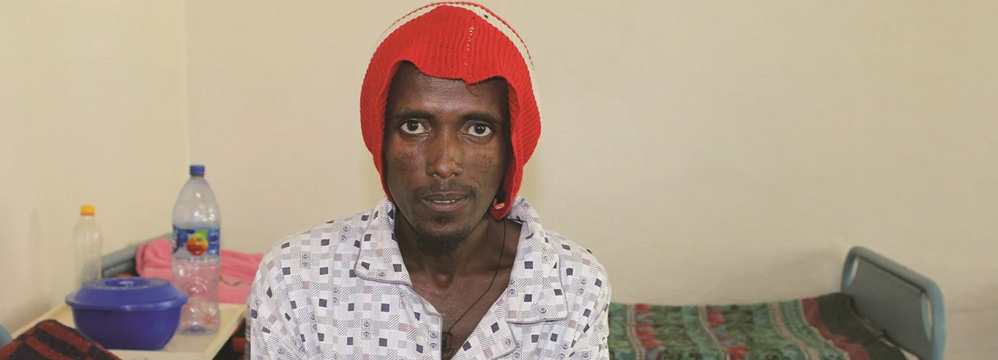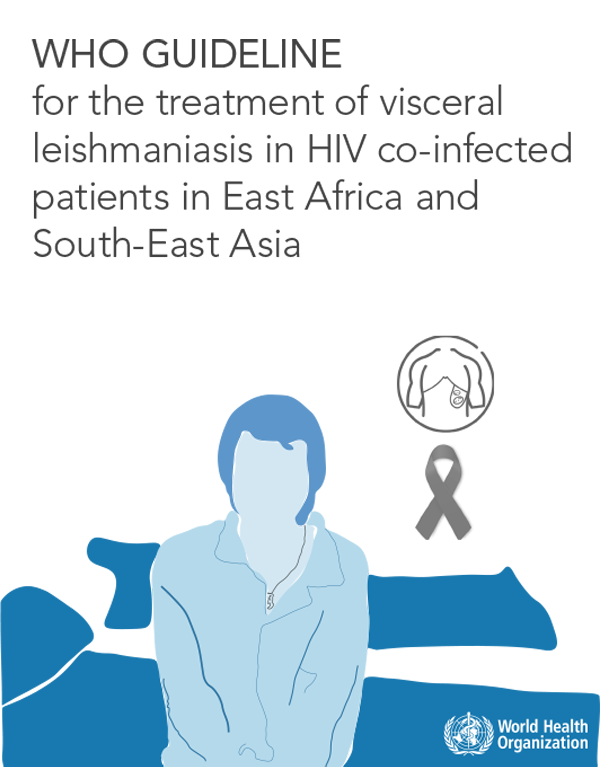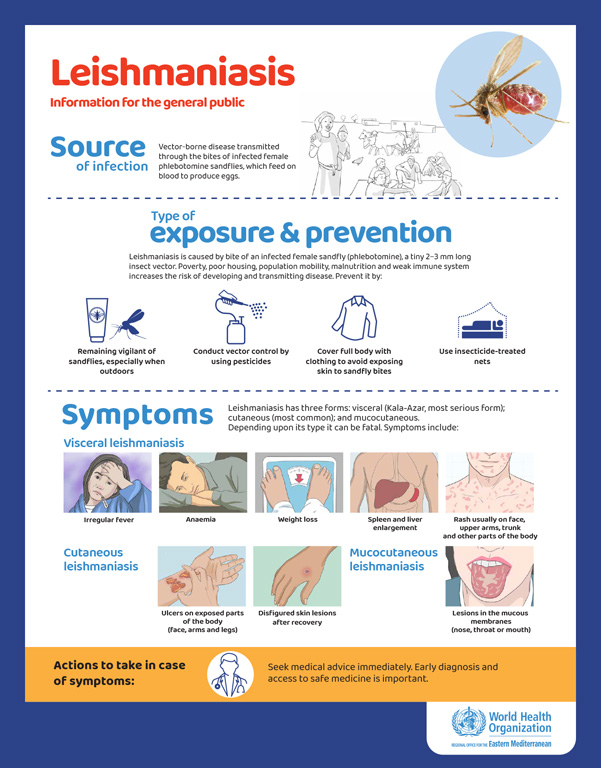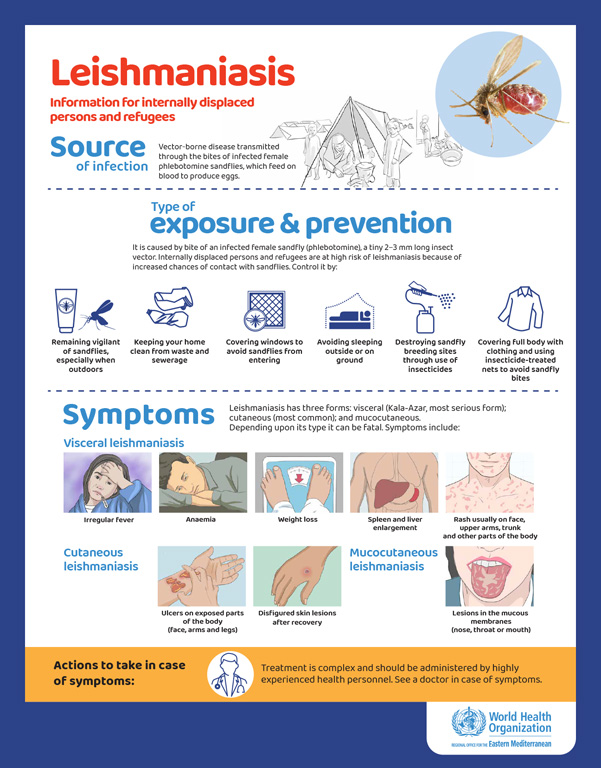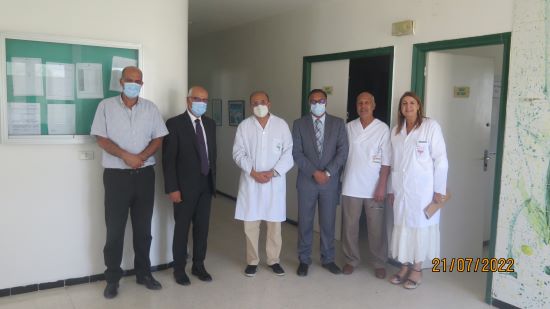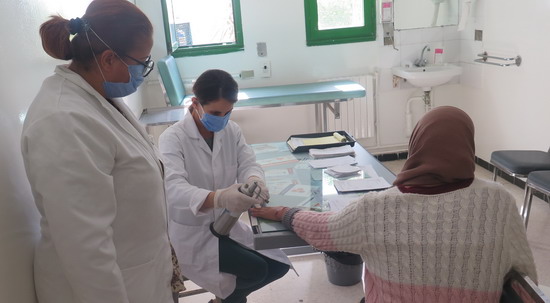Leishmanisis
What is leishmaniasis?
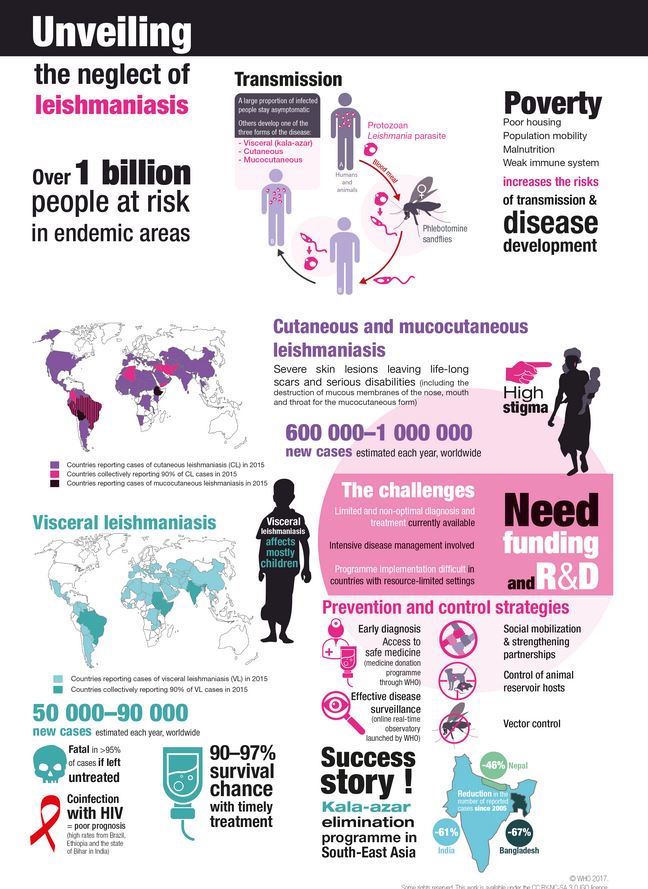 The leishmaniases are a group of diseases caused by protozoan parasites from more than 20 Leishmania species. These parasites are transmitted to humans by the bite of an infected female phlebotomine sandfly, a tiny – 2–3 mm long – insect vector.
The leishmaniases are a group of diseases caused by protozoan parasites from more than 20 Leishmania species. These parasites are transmitted to humans by the bite of an infected female phlebotomine sandfly, a tiny – 2–3 mm long – insect vector.
There are 3 main forms of leishmaniases:
- Visceral (also known as kala-azar) is fatal if left untreated. It is characterized by an irregular fever, weight loss, enlargement of liver and spleen, and anaemia. A complication of visceral leishmaniases can also develop called post-kalazar dermal leishmaniasis, which is characterized by disfiguring skin lesions and usually occurs months after a patient has recovered.
- Cutaneous (the most common) presents as skin lesions that can cause scarring and disability.
- Mucocutaneous where lesions develop in the mucous membranes with destruction of the nose, throat or mouth.
In 2018, the Eastern Mediterranean Region accounted for 70% of the global cutaneous leishmaniasis burden with over 90% of the burden reported from 3 countries: Syria, Afghanistan and Pakistan. Visceral leishmaniasis is also highly endemic in Iraq, Somalia and Sudan. Post-kalazar dermal leishmaniasis is mainly found in the East African focus of visceral leishmaniases.
Country profiles | Global Health Observatory data repository
The aim of the neglected tropical diseases roadmap "Ending the neglect to attain the Sustainable Development Goals: a road map for neglected tropical diseases 2021–2030" is to detect and report at least 85% of all cases, and treat at least 95% of them, by 2030. While visceral leishmaniasis is targeted for elimination as a public health threat defined as <1% case-fatality rate.








